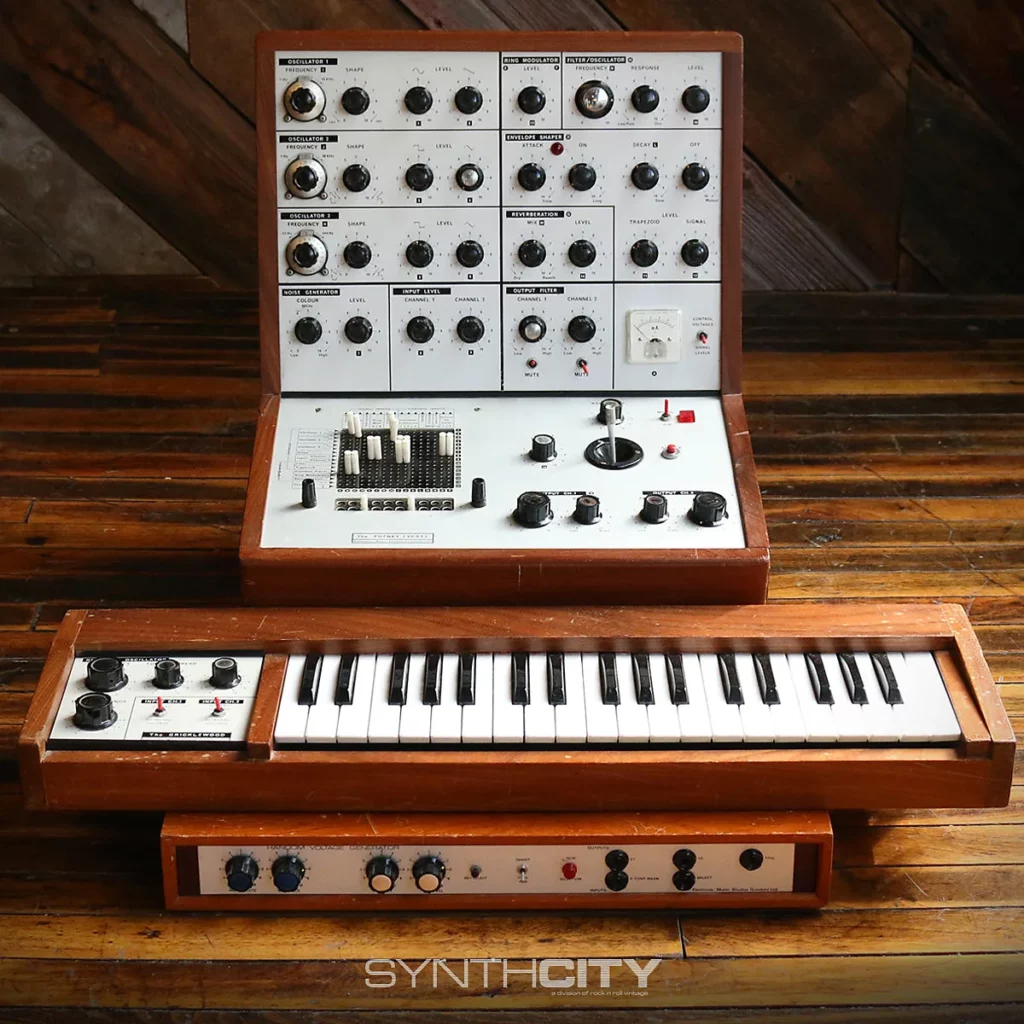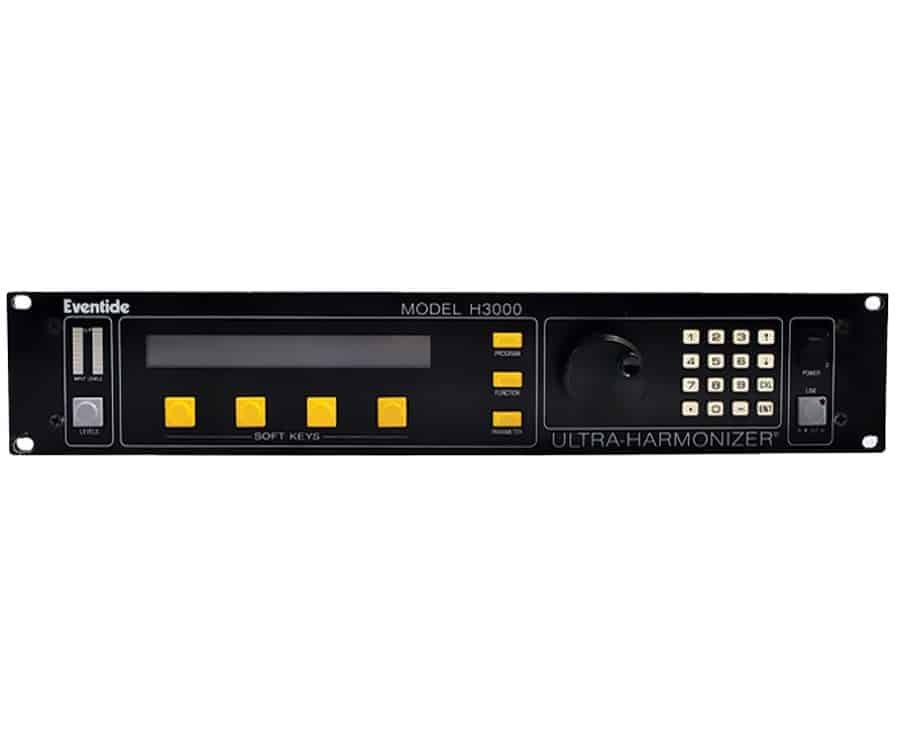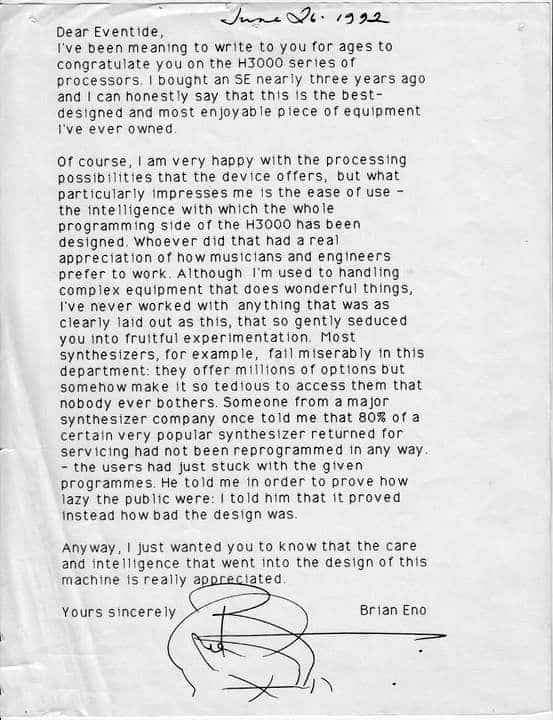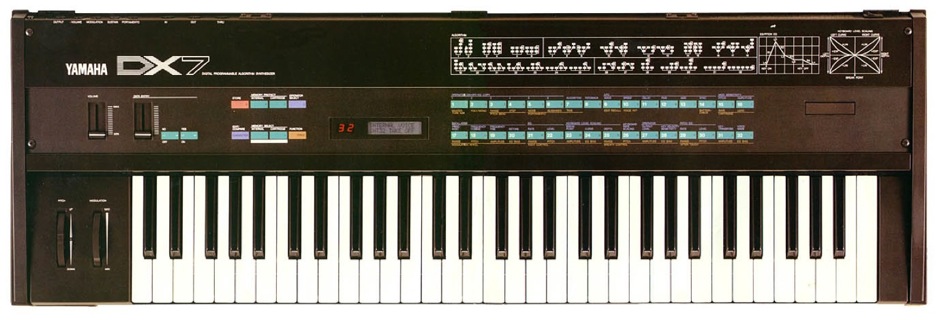Words by James Callanan
Delving into a selection of the gear loved and used by the almighty synth lord himself – Brian Eno.
Brian Eno’s seemingly ever-present artistic career portrays him as something of a musical chameleon. From generating some of the most memorable and unique synthetic tones to ever occur in music, to producing chart-topping albums, Brian Eno was an innovator from both sides of the glass.
Read all the latest features, columns and more here.
Shortly after deciding to pursue a career in professional music, Eno co-founded the legendary Roxy Music with saxophonist Andy Mackay. This art-rock outfit had many successful stints throughout the ‘70s and ‘80s, with their music combining catchy melodies with often unconventional song structures. Brian Eno undoubtedly had a massive input to Roxy Music’s signature sound, with many of their songs emphasising ambience through synthesiser soundscapes, adding mood and depth to their flavour.
Currently sitting at half a century in tenure, Eno’s still-active solo career has also produced some iconic work, with one such example being 1973’s ‘Here Come the Warm Jets’ – showcasing his ability to create sonic architecture through layering sounds, though in an accessible format. In addition to his group and solo work, perhaps some of Brian Eno’s best work has come through his collaboration with some of art-rock and alt-rock’s biggest proponents. As an innovative producer, Eno has worked with the artistic minds of Robert Fripp, David Bowie, Judy Nylon, and the Talking Heads, to name just a few.
As an innovative musician, producer, and composer, Brian Eno is one of the world’s greatest musical revolutionaries. These are some of the synthesisers and effects units that he used to change the course of music.
EMS VCS 3
First sold in 1969, the EMS VCS 3 was one of the first portable synthesisers, and was highly practical compared to the gigantic original Moog synthesisiers, for working musicians that needed to move around. With three voltage-controlled oscillators, the VCS 3 was unique compared to other modular systems, as instead of using cables to patch sounds, users would instead insert pins into the patchboard matrix.

Having modified it with new housing he built himself, Brian Eno used this throughout his musical career, including the fantastic synth “solo” he played during ‘Ladytron’ on Roxy Music’s 1972 appearance on the Old Grey Whistle Test. In a 1984 interview, Eno described how he took live instruments into the synth to treat their sound. Despite his effective use of them, Eno claimed that “they are quite rough though, those early synths”.
EMS Synthi AKS

The EMS Synthi AKS is almost identical to the original VCS 3, though it is housed in a plastic case with a handle. Brian Eno famously used this monosynth in a briefcase on the title track of David Bowie’s ‘Heroes’, messing with the filters and joystick to create a “shuddering, chattering effect [that] slowly builds up and gets more and more obvious towards the end”, according to producer Tony Visconti.
For someone with as much creative integrity as Brian Eno, it is initially surprising to hear how much sentiment he has for one of the most commercially successful digital synthesisers of all time. After falling ill and having ample time to use the DX7, Eno described the rapport he had for the instrument, deciding to revert to a more simplistic means of creating music.
“I use the DX7 because I understand it… I know that there are theoretically better synths, but I don’t know how to use them. I know how to use this. I have a relationship with it.”
While Eno continued to use his DX7 into the nineties and beyond, this synth most notably appeared on his 1983 album ‘Apollo’, a collection of ambient noises and soundscapes. ‘An Ending (Ascent)’ from this album showcases the harmonious and ethereal properties that Eno was able to extract from the DX7.
Eventide H3000 Harmonizer

Prior to the production of the Eventide H910 Harmonizer unit, changing the pitch of recorded audio meant having to speed up or slow down the playback speed on a tape unit. In 1974, this all changed, with the advent of the digital H910 enabling artists and engineers alike to change the pitch of recorded audio without altering its duration.
For the production of David Bowie’s eleventh album, ‘Low’, Eno and Bowie enlisted the help of Tony Visconti to “to waste a month on experiments that might come to nothing”. Visconti introduced the Eventide Harmonizer, explaining that it “fucks with the fabric of time”.
1986 saw the release of the Eventide H3000 Ultra-Harmonizer, the first unit to introduce true diatonic shifting, meaning that the shifted pitch stays in key. It is not unreasonable to deduct that this paved the way for more modern pitch-altering effects, such as Melodyne and other forms of autotune.
Most notably using the H3000 in his production of U2, Brian Eno wrote to Eventide to “congratulate” them, as it was the “best-designed and most enjoyable piece of equipment” that he had ever owned.

Brian Eno made significant contributions to art and music through his unique ability to write and produce accessible songs with true technical artistry. It was through his innovation in modifying instruments and building soundscapes that lead to his enlistment by some of the greatest musical acts of the seventies, eighties, and beyond, resulting in radical new sounds alongside expertly produced pop music. Brian Eno continues to prove his worth as a musician and producer, while simultaneously having impacted on the very course that music has taken, through his innovative legacy.
Read about Brian Eno’s new collaborative album with Fred Again here.

